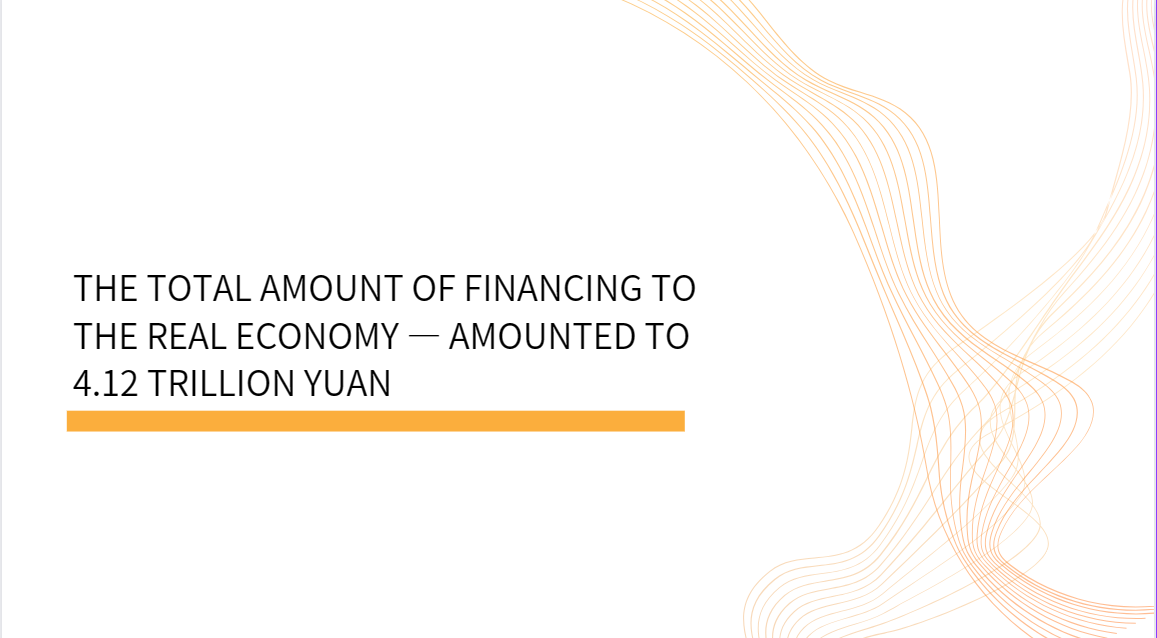Time for stronger policy as growth room seen
As China's Ministry of Finance vowed in late August to continue to increase the issuance of local government special bonds in the latter half of the year, the country's economy was expected to continue to record stable recovery figures in September and October. And the economic growth rate in the fourth quarter is likely to outdo that of the third, with more sustained healthy performance seen ahead.
However, concerns are still being voiced in the market over the impact of medium- and long-term challenges — such as debt levels, an aging population and the anti-globalization sentiment — on the potential of the nation's economic growth. For example, the real estate sector is still in the process of deleveraging, whose impact on the economy may deepen further. This will not only drag down investment, but also affect household consumption.
Many economies have been through such a process, and the results mostly suggest that nominal GDP growth, if there is no coordinated fiscal and monetary easing in place, is likely to see a more rapid decline than debt levels, leading to financing issues.
The United States during the Great Depression of the 1930s and Japan during deflation in the 1990s can both serve as lessons for China in this case. That is, in the process of deleveraging, they did not create a favorable macro environment in time for loose monetary and fiscal policies, and interest rates were significantly higher than economic growth. At the time, the US and Japan had just experienced economic bubbles, and decision-makers were extremely reluctant to adopt large-scale easing policies due to concerns over resource misallocation after easing moves. Such concerns, as a result, placed their economies in a cycle of low inflation and low growth, leading to even greater challenges to break out of downcycles. Ultimately, the US was hit by the Great Depression, and Japan suffered two decades of deflation.
Worries about whether China can sustain growth and overcome the middle-income trap in the medium to long term are not imaginary fears, as there do exist challenges, including debt, deflation and the anti-globalization sentiment. But, by contrast, with lessons from the past, China — which we don't think will see the same results as Japan in the 1990s — has ample policy options available to avoid a balance sheet recession or deflation. In addition, there are also many positive factors supporting the nation's economic vibrancy to this end.
Not the same path
First, compared with many developed economies, China has greater room for growth. According to the National Bureau of Statistics, China's per capita GDP reached $12,741 in 2022, which is some 17 percent that of the US. Having been narrowing in the past three decades, the gap between the two major economies slightly widened this year due to the slower growth rate of China's nominal GDP and exchange rate factors. This shows that China still has huge room to catch up, and its productivity can be further improved.
Second, before China started deleveraging in its real estate sector, the accumulative growth of asset prices was relatively small, unlike many studies overseas claiming that China is now like Japan in the 1990s with a large real estate bubble. In terms of the increase in asset prices, there is a big difference between China and Japan. In the 1980s, Japan's corporate sector used heavy borrowing to finance large-scale land and real estate projects, resulting in a continuous increase in land prices. By 1990, Japan's land value had been five or six times its GDP.The same is also true of Japan's capital markets, where the market capitalization of stocks on the Tokyo Stock Exchange rose from 34 percent of GDP in 1982 to 142 percent in 1989. In contrast, before this round of real estate deleveraging, China's real estate and share prices rose relatively modestly, with property value accounting for about 260 percent of GDP and share values accounting for 67 percent. China's asset prices are not as extreme as they were in Japan at the time.
Third, China still has a relatively large space for policy moves, and even more wiggle room when it comes to central fiscal and monetary measures that can be coordinated to boost easing. Fifteen years ago, the ratio of central government debt to GDP in China and the US was similar — both about 20 percent. Today, the figure in the US is close to 100 percent while China is still at 20 percent. The country maintains a manageable central government debt level. Since the end of last year, China's monetary policy has taken the lead in easing, encouraging lending through cuts in interest rates and reserve requirement ratios. However, fiscal policy could be more active. According to our calculations, broad fiscal policy contracted by 4 percentage points in the first half. Under such a circumstance, enhancing the strength of fiscal policy and coordinated easing with monetary policy will be key to the recovery of the nation's economy, which is striving against a growth downtrend and low inflation.
A way out
Based on the abovementioned considerations, the country can address certain aspects to improve market confidence — reinflation, rebalancing, restructuring, reform and reviving the confidence of private enterprises.
In terms of reinflation, the central government's fiscal policy can ramp up efforts in some megacities to support the transformation of "urban villages", build more subsidized housing and spur the construction of green infrastructure. Measures such as expanding the budget deficit of the central government and the scale of local special debt — and using quasi-fiscal means — will help the nation emerge from the quagmire of potential deflation.
Also, in the current situation, another round of stimulus may trigger concerns over resource misallocation, overcapacity and excessive leveraging. To this end, rebalancing could be used as part of this round of fiscal easing.
Generally, the measure preferred by developed economies is to incentivize consumers, such as issuing subsidies or vouchers. For China, in addition to such a move, it can also increase investment in the social security system and social welfare, such as investing more to support education, healthcare and pensions, and offer more unemployment insurance benefits. Offering stronger support for migrant workers in major cities to improve their livelihoods will also spur shopping behavior. Such rebalancing moves can both reduce fears that stimulus moves prove ineffective, and provide consumption support in the household sector where buying confidence is the weakest.
In terms of debt, apart from the debt burden in the real estate sector, the local hidden debt related to the real estate is also a major concern. Gladly, the nation has vowed to introduce a package of debt schemes to reduce liquidity pressures among local governments in repayment and interest payments in the short term, while we see clearer and more powerful debt reduction plans will be necessary to this end in the future, such as swapping debt between central and local governments, improving the income of local State-owned enterprises through reform, increasing dividends and equity transfers of SOEs and injecting assets into local financing vehicles with a cautious eye on their liabilities. Commercial lenders can also offer a helping hand in this regard, such as accepting extensions for local hidden loans.
In the corporate sector, reform efforts can be enhanced among SOEs that still have room for productivity gains, such as introducing market-oriented incentives, improving corporate governance and further enhancing productivity. In terms of boosting the confidence of private firms, apart from the policies that have already been introduced this year, more benchmark measures can be rolled out to further boost confidence among private enterprises and foreign invested firms, such as facilitating license approvals and listing rules.
Last but not least, a vibrant capital market is also key to overall recovery. The country's top leadership has urged efforts to activate the capital market and restore investor confidence. The capital market is a barometer of economic confidence and is closely related to economic expectations. Since the second quarter, the confidence of foreign investors in China's capital market was shaken by slowing nominal GDP growth, that is, economic growth plus inflation. And if the nation can step up its move away from a low-price-low-growth cycle in a timely and robust manner, we expect China's nominal GDP will still rise to around 5 percent in the next two to three years, and overall market expectations will also see a gradual improvement.
The writer is chief economist with Morgan Stanley China.
This op-ed is a translation of his presentation to a monthly forum held by the China Macroeconomy Forum, or CMF, a think tank in Beijing.





















































First, please LoginComment After ~